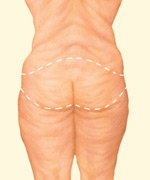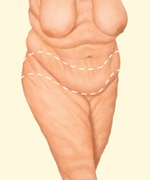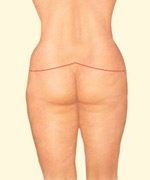Lower Body Lift
A body lift improves the shape and tone of the underlying tissue that supports fat and skin. Excess sagging fat and skin are removed to treat conditions caused in part by poor tissue elasticity. This procedure is frequently employed for patients who have experienced dramatic weight loss.
Consultation with Dr Philip Fleming is the best way to determine how body lift can help you achieve your personal goals. Dr Fleming is certified by the American Board of Plastic Surgery, Inc and he has more than 25 years of experience in performing body lift. The following is an overview of body lift procedures.
Procedural Steps
What happens during body lift surgery?
Step 1 -Anesthesia
Medications are administered for your comfort during the surgical procedures. The choices include intravenous sedation and general anesthesia. Your doctor will recommend the best choice for you.
Step 2 – The incision
Incision length and pattern depend on the amount and location of excess skin to be removed, as well as personal preference and surgical judgment.
A complete lower body lift treats the buttocks, abdomen, waist, hips and thighs in one procedure. A circumferential incision around the body removes an apron of excess skin and fat and repositions and tightens tissues.
Lower Body Lift Incisions
A combination of liposuction and surgical body lifts may be necessary to achieve an improved contour. Deep support sutures within underlying tissues help to form the newly shaped contours.
Step 3 – Closing the incisions
Sutures, skin adhesives or tapes close the skin incisions.
Lower Body Lift Incision Closure
After your body lift procedure is completed, dressings or bandages will be applied to the incisions. A small, thin tube may be temporarily placed under the skin to drain any excess blood or fluid that may collect.
Step 4 – See the results
The results of a body lift are visible almost immediately. It may take as long as one to two years for the final results to fully develop.








